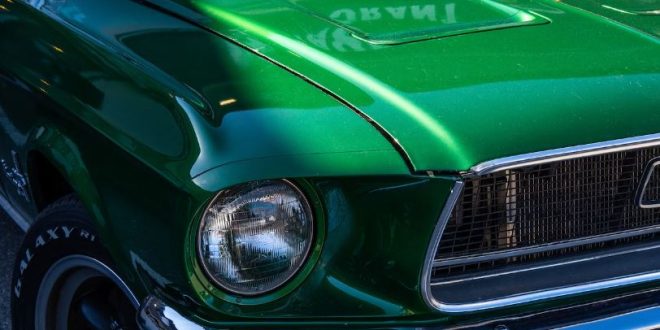Imagine hurtling down a bumpy road. Your car bounces like a pogo stick, wheels struggling to maintain contact with the ground, threatening to send you careening out of control. Now, picture yourself in a truck, gliding over the same terrain with surprising grace, the suspension absorbing every jolt and dip with stoic ease. The difference? In large part, it boils down to the unsung heroes of ride quality: car shocks and truck shocks. While they share a similar purpose, the demands placed on them by their respective vehicles necessitate significant differences in their design and performance. Let’s delve into the world of these resilient components with Adelaide’s Auto Wrecker services and discover what makes them unique.
Built for Different Burdens: The Anatomy of a Shock
At their core, both car and truck shocks operate on the same principle: they’re hydraulic dampers that control the movement of springs in the suspension system. Fluid flows through valves as the spring compresses and rebounds, regulating the rate at which it returns to its resting position. However, the devil is in the details. Truck shocks are built to handle significantly greater loads than their car counterparts. They boast:
- Larger diameter pistons and cylinders: This translates to a greater surface area for the fluid to work against, providing more damping force and the ability to handle heavier weights.
- Stronger springs: Trucks frequently carry heavy cargo and navigate rough terrain, so their springs need to be stiffer to resist compression and maintain ride height.
- Sturdier construction: Truck shocks employ robust materials and reinforced components to withstand the increased stress and potential impacts associated with off-road adventures or hauling heavy payloads.
Performance Tailored to Purpose: Handling and Stability
The differences in design translate to distinct performance characteristics. Car shocks prioritize smoothness and comfort, providing a softer ride that absorbs bumps and keeps passengers happy. They’re tuned for agility and responsiveness, enabling precise handling on paved roads. Truck shocks, on the other hand, emphasize stability and control over bumps and uneven terrain. Their stiffer springs and greater damping force minimize body roll and keep the truck planted firmly on the ground, crucial for handling heavy loads and navigating rough roads.
Durability and Maintenance: Built to Last
Just like any mechanical component, both car and truck shocks wear out over time. However, due to the heavier loads they bear, truck shocks typically require more frequent replacements than car shocks. Additionally, factors like off-road use and overloading can significantly shorten their lifespan. Regular inspections and proper maintenance are key to ensuring optimal performance and longevity.
Beyond the Basics: Advanced Shock Options
The world of shocks doesn’t stop at basic options. Both car and truck owners can opt for performance-oriented shocks that offer enhanced handling and control during spirited driving. Some trucks even feature adjustable shocks, allowing drivers to fine-tune the ride quality for specific needs, be it navigating rocky trails or cruising down the highway with a heavy trailer.
Choosing the Right Shock: Finding Your Perfect Match
Selecting the right shock absorbers for your vehicle depends on a variety of factors:
- Vehicle type and weight: Trucks obviously require heavier-duty shocks than cars.
- Driving style and terrain: Do you prioritize comfort and fuel efficiency, or do you need rugged performance for off-road adventures?
- Budget: Performance and adjustable shocks generally come at a premium price.
Consulting a qualified mechanic or a reputable auto parts store can help you navigate the options and choose the shocks that best suit your needs and budget.
FAQ’s
Q1: How do car shocks differ from truck shocks in terms of design?
A1: Car shocks and truck shocks differ in design to accommodate the distinct weight and load-bearing requirements of each vehicle. Truck shocks are generally larger and sturdier to handle heavier loads and provide stability.
Q2: Can I use car shocks on my truck or vice versa?
A2: It’s not recommended to interchange car shocks with truck shocks or vice versa. The design and load-carrying capacity of each type are specifically tailored to the characteristics of the vehicle. Using the wrong type can compromise performance and safety.
Q3: What factors should I consider when choosing between car and truck shocks?
A3: Consider the weight, load capacity, and driving conditions of your vehicle. Car shocks are optimized for lighter loads and smoother rides, while truck shocks are designed to handle heavier loads and rugged terrains.
visit: https://cash-4-cars.com.au/holden-wreckers-adelaide/
Final Words: A World of Difference Under Your Wheels
Car and truck shocks, though superficially similar, embody a world of difference in design and performance. Understanding their distinctions empowers you to make informed choices, ensuring a smooth and stable ride regardless of the road ahead. So, the next time you encounter a bumpy journey, remember the silent warriors beneath your wheels, tirelessly absorbing the impact and delivering a safe and comfortable ride.
By recognizing the unique demands placed on car and truck shocks, we can appreciate the engineering marvels that keep our vehicles stable, comfortable, and in control, no matter the terrain. Whether you’re cruising down the highway in your sedan or tackling an off-road adventure in your truck, your shocks are unsung heroes, deserving of both respect and proper care.
 Blogging World Tech
Blogging World Tech

